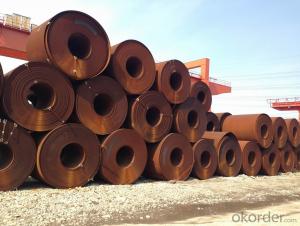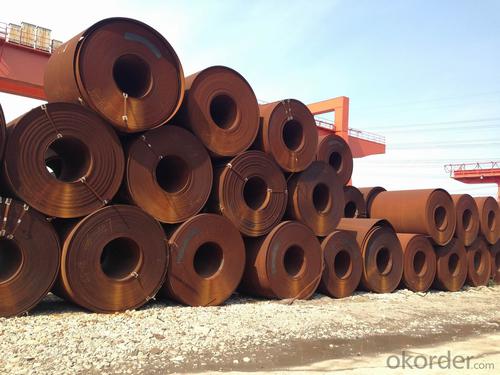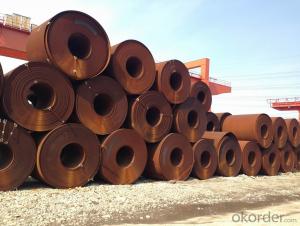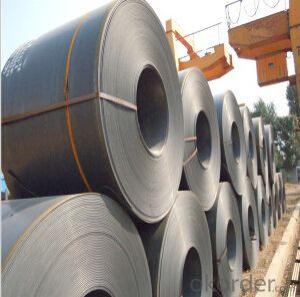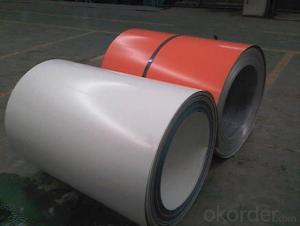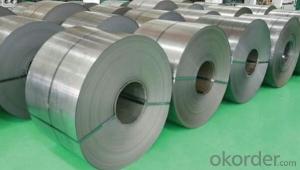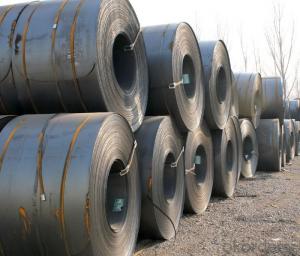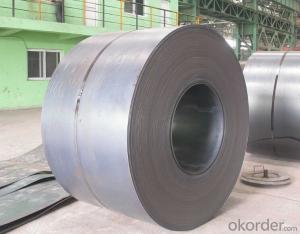Hot Rolled Steel Coil for Construction and Spring
- Loading Port:
- Tianjin
- Payment Terms:
- TT OR LC
- Min Order Qty:
- 500 m.t.
- Supply Capability:
- 5000 m.t./month
OKorder Service Pledge
OKorder Financial Service
You Might Also Like
Specification
,、、、、
,。
。、,
,。
。,,。
。。
。
1. Product Description
The Billets as raw materials, through furnace heating, high-pressure water to reduce the phosphorus, then entering the roughing mill, cutting head, end, and then put into the finishing mill, cutting the edge, after the times of straightening, leveling and other finishing line treatment, and then cutting board or coil becomes the hot rolled steel sheet and hot rolled steel coil.
2. Main Features
Characteristics of hot rolled steel hot-rolled steel is a high temperature heating and rolled steel, hot rolled product has high strength, good toughness, easy to processing molding and good weldability and other excellent properties, which are widely used in ship, automobile, Bridges, buildings, machinery, pressure vessels and other manufacturing industries.
3. Excellent Product Image
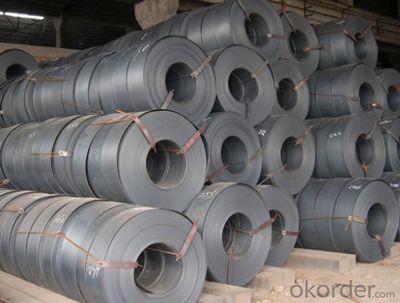
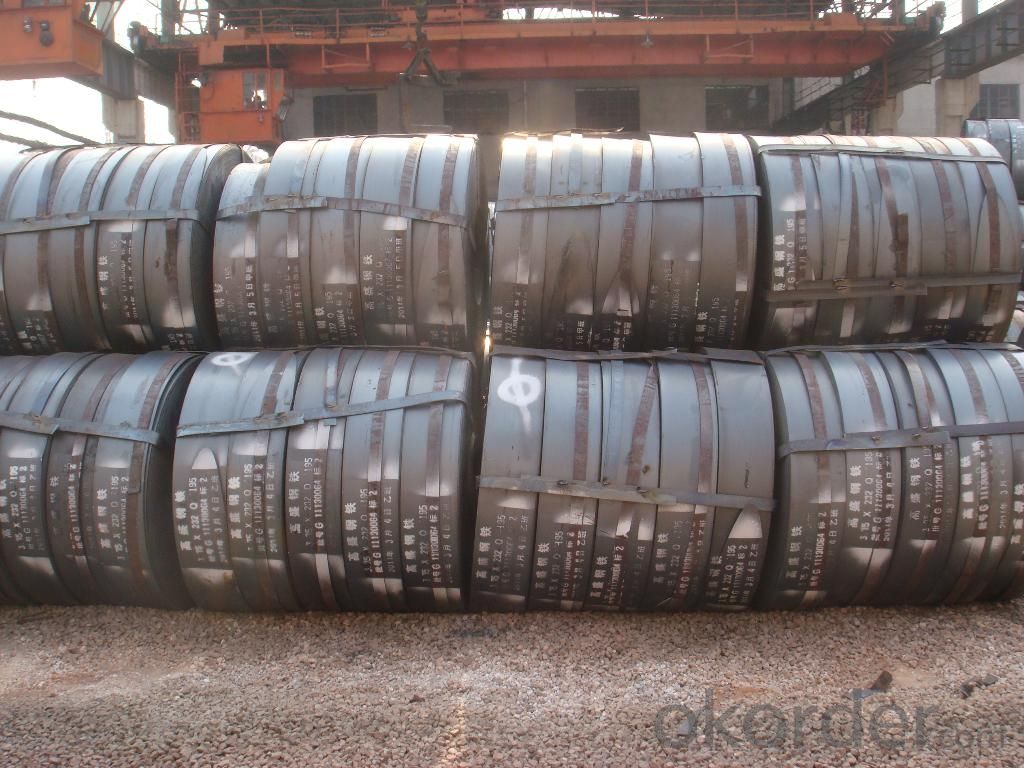
4. Application
Our hot-rolled steel coil and sheet are applied to a wide range of uses such as automobile, electrical appliance, machinery manufacturing, container manufacturing, shipbuilding, bridge, pipeline, and receive high acclaim from our customers for its excellent quality.
Hot rolled sheet is one of the most important in the plate steel varieties, widely used in the container, automobile, railway locomotive car, pipes, cylinders and other industrial production industry, is a base material of manufacture and its deep processing products. Hot rolled sheet mainly by rolling of continuous hot rolling unit. Eventually rolled by a continuous mill of hot rolled sheet can be again after pickling, annealing, then rolled into a roll, roll call of the hot rolled sheet for the hot rolled thin plate. Thin plate usually in plate bending and shear with a certain length and width of the single plate on the market. Rolled plate after uncoiling, according to certain width and length of the shear, namely get hot rolled sheet. Hot rolled sheet according to use can select different steel rolling. Therefore, in accordance with the class to divide hot rolled sheet steel varieties.

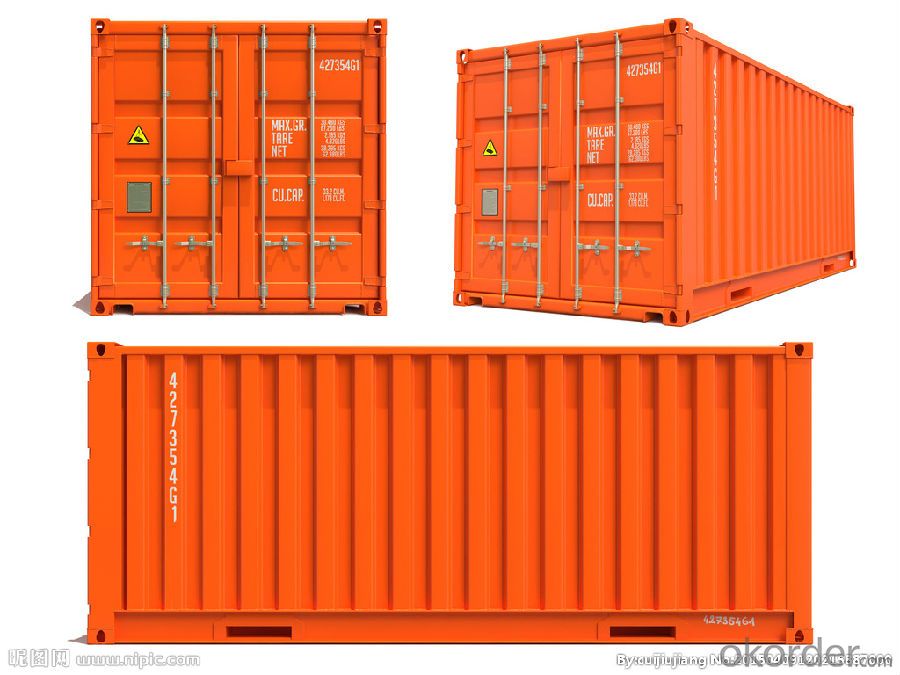

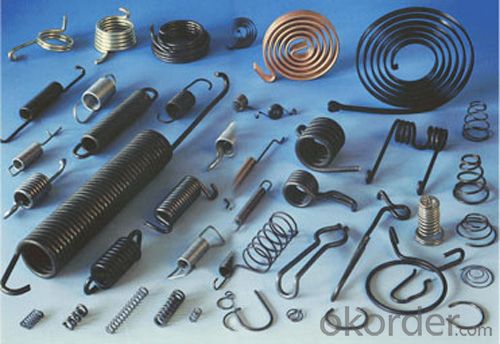
- Q: What are the advantages of using galvanized steel coils?
- There are numerous advantages to using galvanized steel coils in various applications. Firstly, galvanized steel coils are highly resistant to corrosion. The process of galvanization involves coating the steel with a layer of zinc, which acts as a protective barrier against moisture, chemicals, and other elements that can cause rust and corrosion. This makes galvanized steel coils ideal for outdoor applications where they will be exposed to harsh weather conditions or corrosive substances. Secondly, galvanized steel coils have excellent durability and longevity. The zinc coating provides an extra layer of protection to the steel, making it more resistant to wear and tear. This means that galvanized steel coils have a longer lifespan compared to other types of steel, reducing the need for frequent replacements and saving costs in the long run. Additionally, galvanized steel coils have high strength and structural integrity. The zinc coating not only provides corrosion resistance but also enhances the overall strength of the steel. This makes galvanized steel coils suitable for applications that require a strong and reliable material, such as construction, automotive, and industrial manufacturing. Furthermore, galvanized steel coils are easy to work with and require minimal maintenance. The zinc coating provides a smooth and uniform surface, making it easier to paint, weld, and fabricate. Unlike other coatings or finishes, galvanized steel coils do not require regular maintenance or additional protective measures, reducing the time and effort needed to keep them in good condition. Lastly, galvanized steel coils are environmentally friendly. The zinc coating used in galvanization is a recyclable material, making it a sustainable choice for various industries. Additionally, the long lifespan of galvanized steel coils reduces the need for frequent replacements, reducing waste and the overall environmental impact. In conclusion, the advantages of using galvanized steel coils include corrosion resistance, durability, high strength, easy workability, low maintenance, and environmental sustainability. These benefits make galvanized steel coils a popular choice in a wide range of applications, from construction and manufacturing to automotive and infrastructure projects.
- Q: How are steel coils used in the manufacturing of steering systems?
- Steel coils are used in the manufacturing of steering systems as they provide the necessary strength and durability required for the components of the system, such as steering columns, gears, and shafts. These coils are shaped and formed into various parts through processes like cutting, bending, and welding, ultimately contributing to the overall stability and functionality of the steering system in vehicles.
- Q: How are steel coils inspected for elongation using elongation testers?
- Elongation testers are utilized to inspect steel coils for elongation, following a specific procedure. Initially, a representative sample is extracted from the steel coil, which is then prepared for testing by cutting it into a specific size and shape. Typically, the sample takes the form of a flat strip. Next, the prepared sample is inserted into the elongation tester, which comprises two clamps. One end of the sample is securely held in one clamp, while the other end is held in the other clamp. These clamps are designed to prevent any slippage during the testing process. Once the sample is securely clamped, the elongation tester applies a gradually increasing tensile force to the sample. Consequently, the sample elongates. During this elongation, the tester measures the change in length using a precision measuring instrument, like a strain gauge or an extensometer. The elongation tester records the original length of the sample before the test and continuously measures the length as the force is applied. To calculate the elongation percentage, the original length is subtracted from the final length of the sample, which is then divided by the original length. The obtained elongation value is then compared to the elongation requirements specified by industry standards or customer specifications. If the elongation falls within the acceptable range, the steel coil is considered to have passed the elongation test. On the other hand, if the elongation value exceeds the allowable limits, the steel coil might be rejected or undergo further investigation to determine the cause of elongation. Overall, the process of inspecting steel coils for elongation using elongation testers involves sampling, secure clamping, application of tensile force, length measurement, and elongation percentage calculation. This ensures that the steel coils meet the desired standards and requirements, guaranteeing their quality and mechanical properties.
- Q: If you keep it dry and clean, what steel will last the longest over the years with continued use and sharpening?
- The one that you keep on a mount over the fireplace and never use.
- Q: i have recently gotten into DIY and am planning on making my own knife. My question is what kind of steel would be good to use for heat treating if i plan on using water and not oil in the process.
- Go to junkyard get old leaf spring, cut out knife, start sharpening. Why waste time heat treating steel when the spring steel as already be done.
- Q: What are the different methods of storing steel coils?
- There are various ways to store steel coils depending on the specific requirements and limitations of the storage facility. Some commonly used methods include: 1. Stacking: Steel coils are stacked on top of one another in a stable manner, maximizing vertical space. However, careful stacking is necessary to maintain stability and prevent damage. 2. Block stacking: Steel coils are arranged in blocks, with each coil placed directly on top of another. The blocks are then stacked to optimize space. This method provides stability and easy access to individual coils, but additional equipment may be needed to prevent damage. 3. Coil cradles: These are specialized racks or frames designed to hold steel coils horizontally. They offer support and prevent rolling or shifting, making them suitable for smaller coils or when quick access is required. 4. Coil saddles: U-shaped frames specifically designed to hold and support steel coils vertically. They are often used in conjunction with block stacking or stack storage methods, providing stability and preventing rolling or collapsing. 5. Coil racks: Steel structures designed to hold multiple coils in an organized manner. They can have multiple levels or tiers, maximizing space efficiency. Coil racks are typically used for larger coils and can be customized for specific dimensions. 6. Automated storage systems: In large-scale facilities, mechanical systems such as coil cranes or coil carousels are used to transport and store steel coils. These systems ensure efficient and fast retrieval in high-volume operations where frequent coil handling is necessary. When determining the most suitable storage method for steel coils, factors such as size, weight, accessibility, and environmental conditions should be considered. Proper handling, labeling, and regular inspections are also crucial for maintaining the integrity and longevity of the stored coils.
- Q: How can I owe a Pre-engineered Steel Building?
- You just have to do small efforts for owing a steel building: Firstly you have to finalize a steel building company for construction work. After finalizing the steel building company, the next step is the paperwork - the agreements and contracts. Some steel building companies may also ask for a verbal approval for the factories to get the work started.
- Q: How do steel coils compare to stainless steel coils?
- Steel coils and stainless steel coils are both widely used in various industries for their strength and durability. However, there are some key differences between the two that should be considered when choosing the appropriate material for a specific application. One of the main distinctions between steel coils and stainless steel coils is the composition of the materials. Steel coils are made primarily of iron and carbon, with other elements added to enhance specific properties. On the other hand, stainless steel coils are made of iron, carbon, and a significant amount of chromium, which gives them their unique corrosion-resistant properties. Due to the presence of chromium, stainless steel coils offer superior resistance to corrosion, tarnishing, and rust compared to regular steel coils. This makes stainless steel coils particularly suitable for applications in environments with high humidity, moisture, or exposure to corrosive substances. In contrast, steel coils are more prone to rust and may require additional protective coatings or treatments to prevent corrosion. Another significant difference is the appearance of the two materials. Stainless steel coils have a shiny and reflective surface, giving them an aesthetically pleasing look. They are commonly used in applications where appearance is important, such as kitchen appliances, architectural structures, or decorative purposes. Steel coils, on the other hand, have a matte or dull finish and are often used in industrial applications where appearance is not a primary concern. In terms of strength, both steel and stainless steel coils offer excellent mechanical properties. However, stainless steel coils generally exhibit higher tensile strength and greater resistance to high temperatures. This makes them suitable for applications that require strength, such as construction, automotive, or aerospace industries. Lastly, cost is a factor that should be considered when comparing steel coils to stainless steel coils. Steel coils are generally more cost-effective than stainless steel coils due to the lower cost of raw materials and simpler manufacturing processes. However, when the added value of corrosion resistance and longevity is taken into account, stainless steel coils may prove to be a more economical choice in the long run, as they require less maintenance and replacement. In conclusion, steel coils and stainless steel coils have different properties and characteristics that make them suitable for specific applications. Stainless steel coils offer superior corrosion resistance, a shiny appearance, and higher tensile strength, while steel coils are more cost-effective. The choice between the two ultimately depends on the specific requirements of the application, such as the environment, aesthetics, strength, and budget.
- Q: What are the challenges in coil leveling for high-strength steel?
- Coil leveling for high-strength steel poses several challenges that need to be addressed in order to achieve optimal results. One of the main challenges is the inherent hardness and strength of the steel itself. High-strength steel is specifically designed to have enhanced mechanical properties, such as tensile strength and hardness, which make it more difficult to deform and shape. The high-strength nature of the steel requires specialized leveling equipment that can apply sufficient force to overcome its resistance to deformation. This may involve using stronger and more durable leveling rollers or increasing the pressure exerted during the leveling process. Failure to apply the appropriate force can result in incomplete leveling, leading to residual stress and potential dimensional inaccuracies in the final product. Another challenge in coil leveling for high-strength steel is the potential for springback. Springback refers to the tendency of the material to revert to its original shape after being deformed. High-strength steel is particularly prone to springback due to its higher elastic modulus. This can result in uneven leveling and dimensional variations in the coil. To mitigate springback, advanced leveling techniques may be employed, such as overbending or pre-bending the steel. Overbending involves bending the steel beyond the desired level, allowing it to spring back to the desired shape. Pre-bending, on the other hand, involves intentionally bending the steel in the opposite direction before leveling it, counteracting the effects of springback. These techniques require precise control and expertise to ensure accurate leveling. Additionally, high-strength steel often has a more pronounced yield point, which is the stress level at which permanent deformation occurs. This can make it more challenging to achieve consistent and uniform leveling throughout the coil. Proper adjustment of the leveling equipment and careful monitoring of the leveling process are necessary to address this challenge effectively. Furthermore, high-strength steel coils are often thinner and more sensitive to surface imperfections. The leveling process must be carefully regulated to avoid causing damage to the steel surface, such as scratches or indentations. This may involve utilizing softer leveling rollers or implementing protective measures, such as cushioning materials or coatings, to prevent surface defects. In summary, the challenges in coil leveling for high-strength steel revolve around its inherent hardness, springback tendencies, yield point behavior, and sensitivity to surface imperfections. Overcoming these challenges requires specialized equipment, advanced leveling techniques, precise control, and expertise to ensure accurate and high-quality leveling results.
- Q: How are steel coils processed for slitting or edge conditioning?
- Steel coils are typically processed for slitting or edge conditioning through a series of steps. First, the coils are uncoiled and inspected for any defects or damages. They are then leveled and straightened to ensure a uniform thickness and flatness. Next, the steel is fed through a slitting machine, which uses rotating circular blades to cut the coil into narrower strips. These strips can be further processed for edge conditioning, where the edges are trimmed or profiled to meet specific customer requirements. This can be done through various methods such as shearing, deburring, or edge rolling. Overall, the process involves precision cutting and shaping techniques to transform the steel coils into desired slitted or edge-conditioned products.
Send your message to us
Hot Rolled Steel Coil for Construction and Spring
- Loading Port:
- Tianjin
- Payment Terms:
- TT OR LC
- Min Order Qty:
- 500 m.t.
- Supply Capability:
- 5000 m.t./month
OKorder Service Pledge
OKorder Financial Service
Similar products
Hot products
Hot Searches
Related keywords
